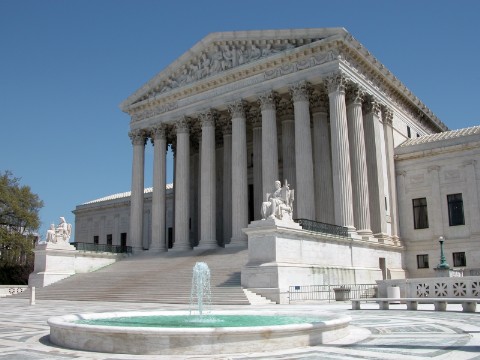
In Schuette v. Coalition to Defend Affirmative Action the Supreme Court held 6-2 that voters may by ballot prohibit affirmative action in public universities admission decisions. While this case was limited to the use of race in public university admission decisions, Michigan’s constitutional amendment also prohibits the use of racial preference in state and local government employment and contracting. Presumably, these provisions are also constitutional. As NCSL’s Affirmative Action: State Action chart describes, a number of states prohibit the use of affirmative action in local government employment and contracting.
In 2003 in Gratz v. Bollinger and Grutter v. Bollinger, involving the University of Michigan, the Supreme Court held that public universities may consider race in admission decisions. In 2006 Michigan voters adopted a constitutional amendment that prohibited preferential treatment in admission to public universities on the basis of race, sex, color, ethnicity, or national origin.
The majority of the Court held this amendment does not violate the Equal Protection Clause of the Fourteenth Amendment. Justice Kennedy, in a plurality opinion joined only by Chief Justice Roberts and Justice Alito, concluded that this case is about who and not how the debate over racial preferences should be resolved. “There is no authority in the Constitution of the United States or in this Court’s precedents for the Judiciary to set aside Michigan laws that commit this policy determination to the voters.”
In reaching this holding Justice Kennedy rejected a broad reading of past precedent that any state action with a “racial focus” that makes it “more difficult for certain racial minorities than for other groups” to “achieve legislation that is in their interest” is subject to strict scrutiny. Justice Kennedy pointed to numerous practical problems with this so-called “political process” doctrine including: assuming that all individuals of the same race think alike; defining race-based categories in a society where “those lines are becoming more blurred”; and determining the policy realms in which racial groups have a political interest.
Justices Scalia and Thomas agreed that the ballot measure was constitutional but would have overruled the precedent that Justice Kennedy read narrowly. For the first time since she joined the Court in 2009, Justice Sotomayor read a summary of her dissent, which Justice Ginsberg joined, from the bench—signaling her displeasure with the Court’s decision. Justice Breyer provided the sixth vote in favor of the amendment but wrote separately; Justice Kagan did not participate in the case.
While those for and against the ballot measure disagree about the wisdom of the Court’s decision, both agree that it will only be a matter of time until more states follow Michigan’s lead. Read more about the Court's decision on SCOTUSblog.
New, Reduced Membership Dues
A new, reduced dues rate is available for CAOs/ACAOs, along with additional discounts for those in smaller communities, has been implemented. Learn more and be sure to join or renew today!
